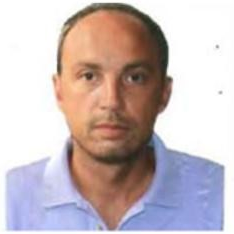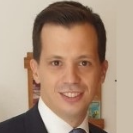Non-destructive Evaluation for Products and Processes
A special issue of Applied Sciences (ISSN 2076-3417). This special issue belongs to the section "Civil Engineering".
Deadline for manuscript submissions: closed (1 March 2024) | Viewed by 5090
Special Issue Editors
Interests: aeronautics; fracture mechanics; structural health monitoring; computational mechanics
Special Issues, Collections and Topics in MDPI journals
Interests: finite element method; failure mechanisms; structural health monitoring; computational solid mechanics; damage tolerance; structural analysis
Interests: structural health monitoring; finite element analysis; structural behavior; mechanical design; crashworthiness
Special Issues, Collections and Topics in MDPI journals
Special Issue Information
Dear Colleagues,
Non-destructive evaluation (NDE) methods are becoming essential for enhancing the monitoring, maintenance and repair operations of both products and industrial processes. Thus, NDE methods, which also include structural health monitoring (SHM) systems, can be used to identify product and process anomalies, provide indications about the location and severity of anomalies, and assess the residual strength of damaged structures and the efficiency of processes.
In recent years, although NDE methods and SHM systems have become increasingly researched, further efforts must be made to enhance their use in real engineering applications and industrial contexts.
This Special Issue aims to collate recent contributions to the research on NDE methods and SHM systems, providing methods for advancing these systems, as well as the assessment and monitoring of products and processes; innovative aspects about their application in different engineering fields and details about the development of modelling techniques to support the design and the use of such methods.
Therefore, findings of theoretical, analytical, numerical, or experimental investigations can be presented, and review articles may also be submitted.
The potential topics of this Special Issue include, but are not limited to:
- NDE methods;
- SHM systems;
- Numerical modelling to support the design of NDE methods and SHM systems;
- SHM and NDE for maintenance management and repair operations;
- Anomaly diagnosis and prognosis;
- Measurements and processing algorithms for the identification and characterization of anomalies.
Prof. Dr. M. H. Ferri Aliabadi
Prof. Dr. Francesco Caputo
Dr. Alessandro De Luca
Guest Editors
Manuscript Submission Information
Manuscripts should be submitted online at www.mdpi.com by registering and logging in to this website. Once you are registered, click here to go to the submission form. Manuscripts can be submitted until the deadline. All submissions that pass pre-check are peer-reviewed. Accepted papers will be published continuously in the journal (as soon as accepted) and will be listed together on the special issue website. Research articles, review articles as well as short communications are invited. For planned papers, a title and short abstract (about 100 words) can be sent to the Editorial Office for announcement on this website.
Submitted manuscripts should not have been published previously, nor be under consideration for publication elsewhere (except conference proceedings papers). All manuscripts are thoroughly refereed through a single-blind peer-review process. A guide for authors and other relevant information for submission of manuscripts is available on the Instructions for Authors page. Applied Sciences is an international peer-reviewed open access semimonthly journal published by MDPI.
Please visit the Instructions for Authors page before submitting a manuscript. The Article Processing Charge (APC) for publication in this open access journal is 2400 CHF (Swiss Francs). Submitted papers should be well formatted and use good English. Authors may use MDPI's English editing service prior to publication or during author revisions.
Keywords
- NDE methods
- SHM systems
- maintenance
- data analysis
- numerical models







